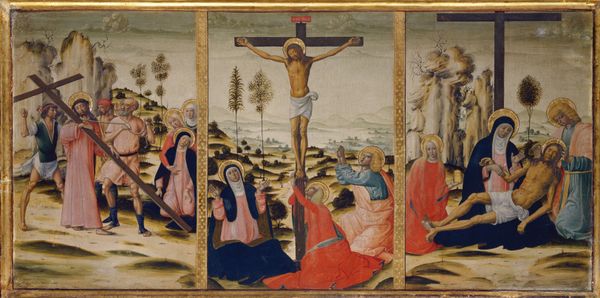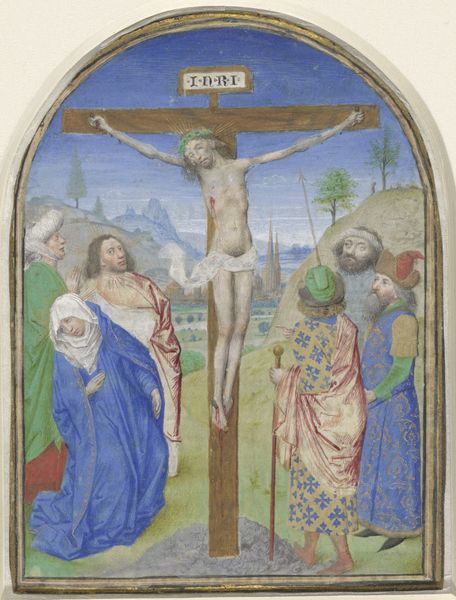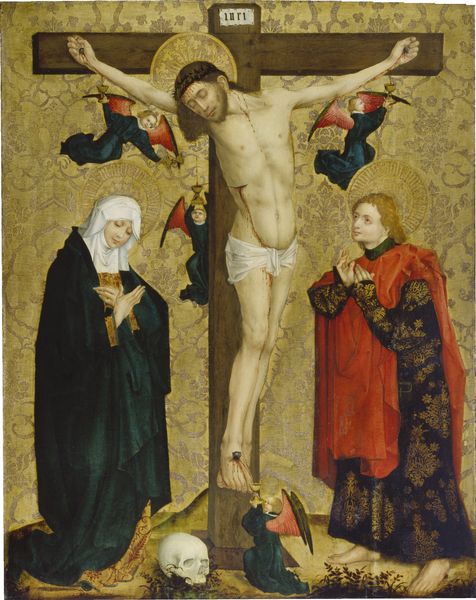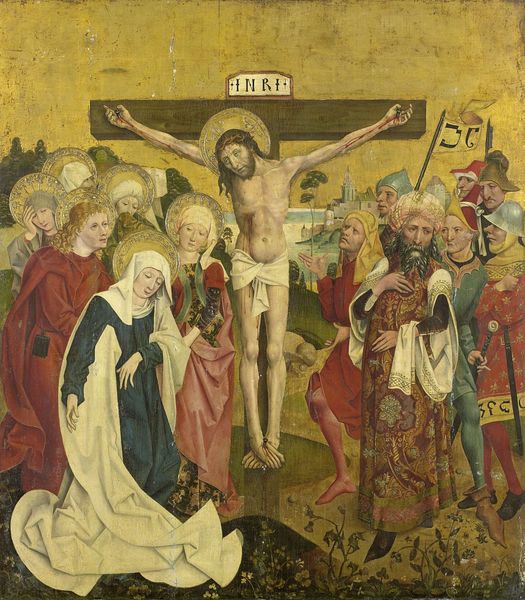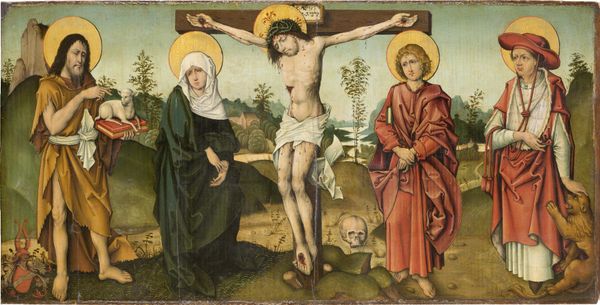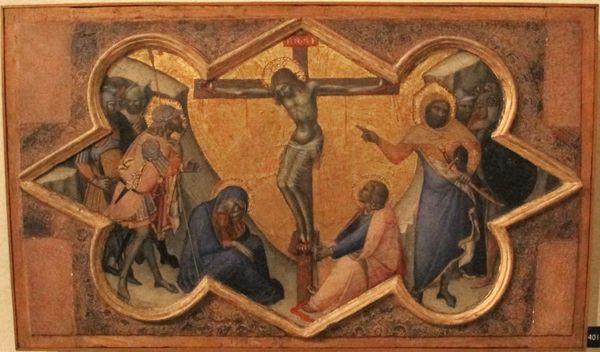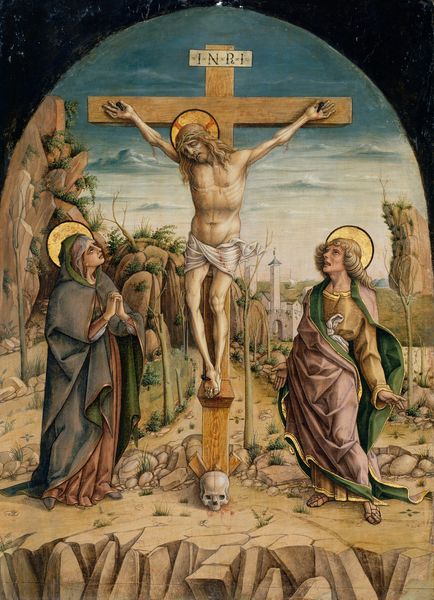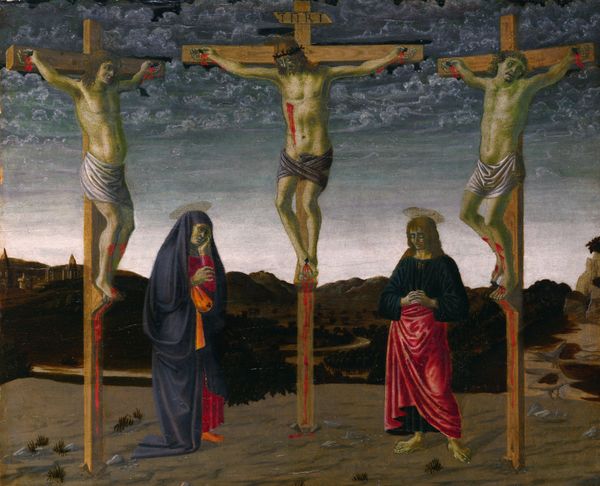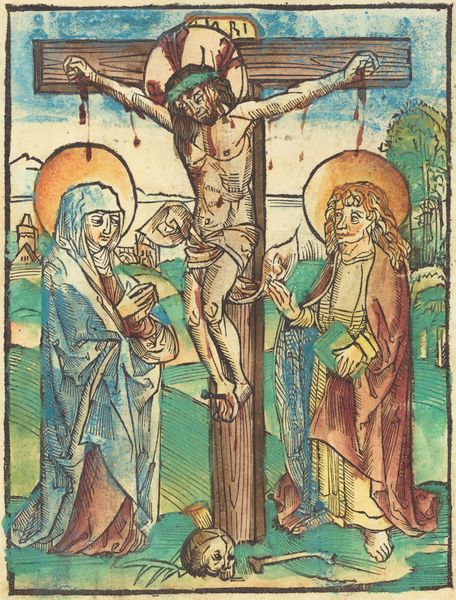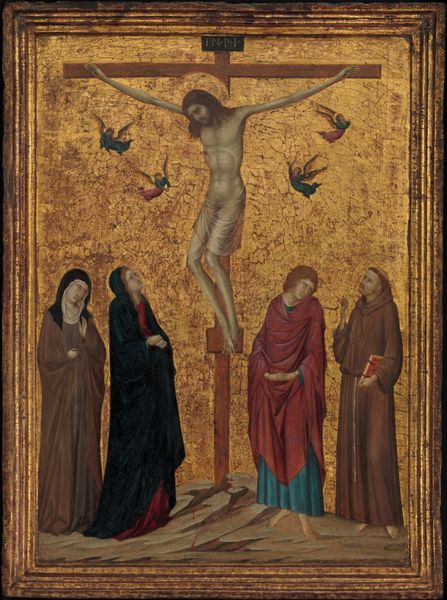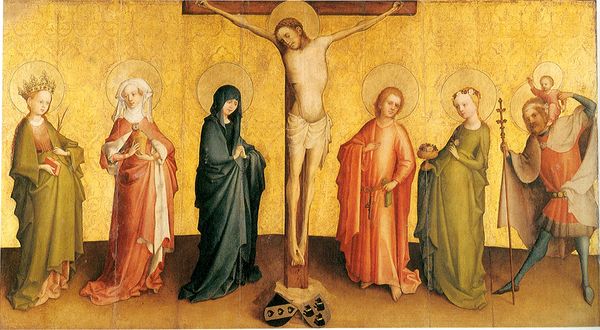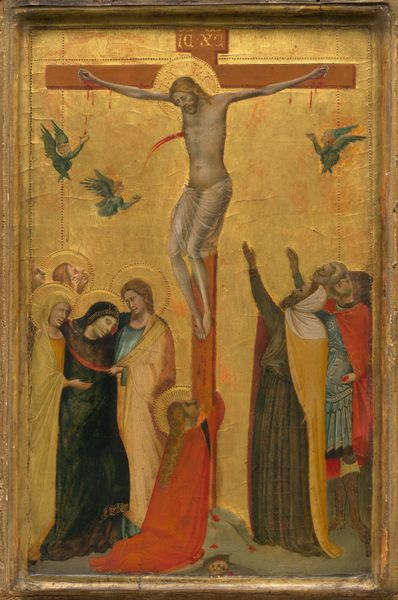
panel, tempera, painting, oil-paint
#
medieval
#
panel
#
tempera
#
painting
#
oil-paint
#
gothic
#
figuration
#
oil painting
#
crucifixion
#
history-painting
#
early-renaissance
#
christ
Dimensions: H. 27-3/4; L. 40-1/2 in.
Copyright: Public Domain
Curator: This is a fifteenth-century panel depicting The Crucifixion, once part of a retable and now residing here at the Metropolitan Museum. Editor: Oh, the somber palette hits you first, doesn’t it? Like a cloud has settled right here in the gallery. All that muted color, save for the shocking glints of gold...it feels both reverent and despairing. Curator: Its materials reflect a fascinating transition period. Tempera provides that distinct matte surface we associate with earlier paintings, but there are signs of oil paint starting to be incorporated. Editor: Yes, the way the figures almost seem flattened emphasizes this interesting push-and-pull in technique. Do you sense it too? It gives them an almost otherworldly presence… spectral, even. I also can’t ignore those male figures standing on the right...they appear so human in comparison to the holy figures to the left. I wonder what their role is, beyond observing and questioning? Curator: Right. The economic implications of moving to oil were profound, granting painters greater freedom and expressive range as well as reflecting the increased cost and availability of raw materials to workshop artists. This panel allows us to glimpse how those artisan workshops adopted new technologies. The shifts in material production completely reformed the painterly economy. Editor: And, as a narrative, of course, The Crucifixion is so raw with emotion. But I also wonder about its placement within the retable. The other panels would have further contextualized this one, either emphasizing continuity or offering dramatic contrast. What do you imagine those missing panels might have represented? Curator: Probably more of Christ's life, earlier moments as well as ones from the passion of Christ would appear alongside, creating a more complete visual theology for the congregants observing it. Editor: It's haunting, even now, this fragment speaking volumes across centuries. The quiet suffering captured here… it still vibrates. Curator: Absolutely, and tracing the blend of materials reminds us that artworks are always the product of particular means of production and of material and historical conditions.
Comments
No comments
Be the first to comment and join the conversation on the ultimate creative platform.
